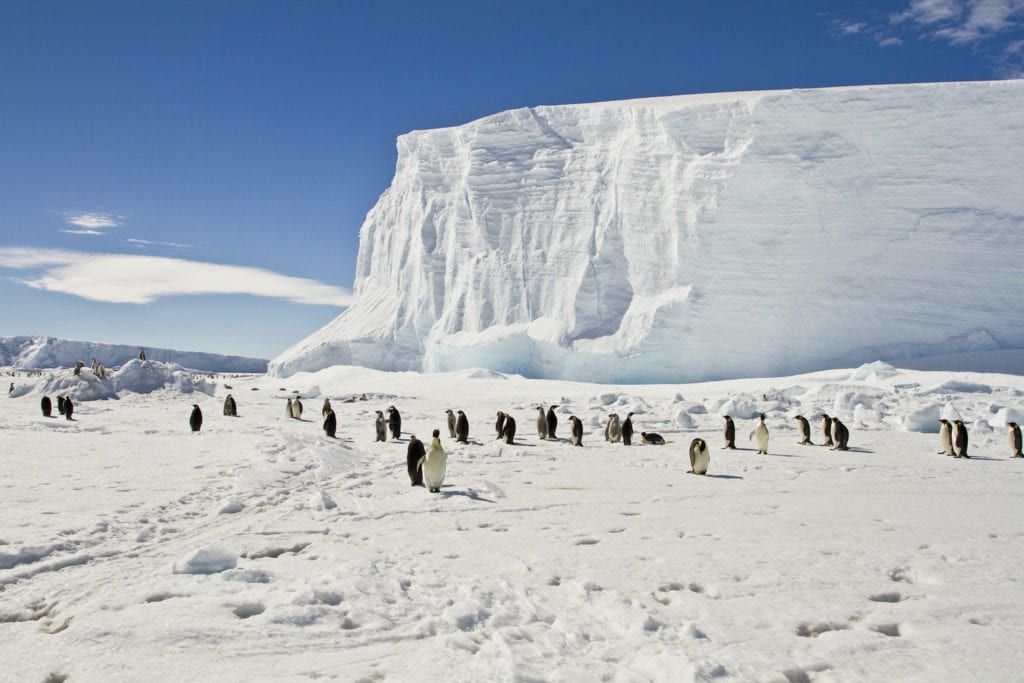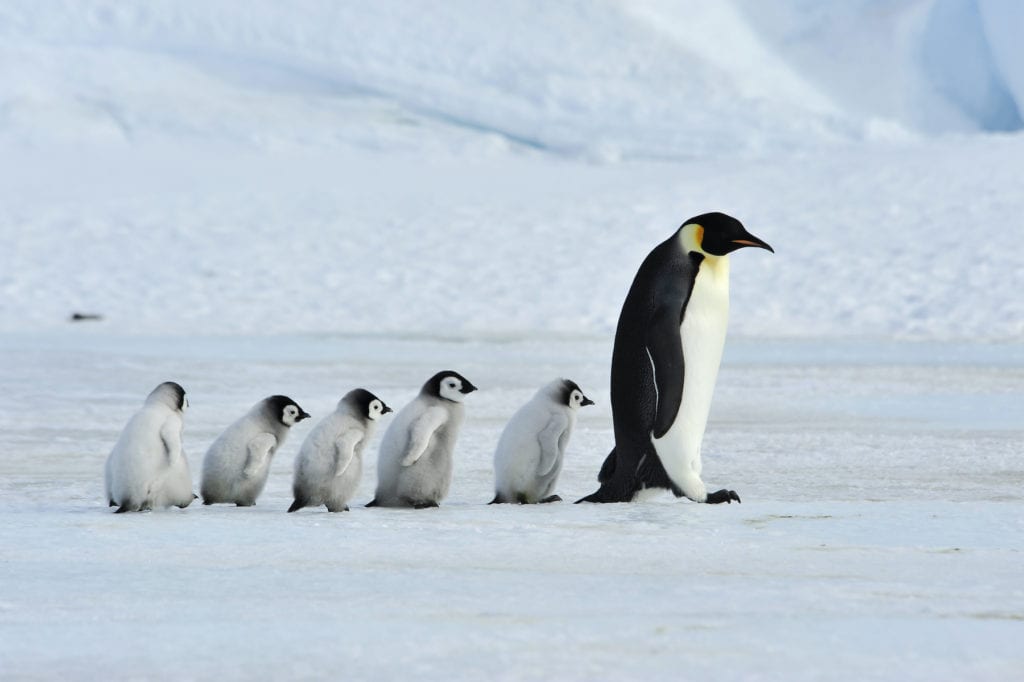Not only does the emperor penguin live in the coldest place on earth; it also chooses the dark, frozen depths of winter as its breeding season. And to get the job done, it must starve itself for up to three months.
Deep freeze
The emperor penguin is the largest of the world’s penguins, reaching 1.2m tall and weighing 35kg or more – though its weight falls by nearly half during the long winter fast.
Temperatures in the Antarctic winter regularly fall below –50oC, and winds of 150km/h batter the icy terrain. Nonetheless, this penguin maintains a constant body temperature of 39oC. Its tiny, blade-like outer feathers are packed more closely together than on any other bird. By holding them erect it can trap an insulating layer of air in the soft down underneath, which keeps body heat in and water out. Constant preening keeps the whole system in order, while a thick layer of fat adds extra insulation.

Warm company helps too. Emperor penguins huddle together to shelter from the elements. This dense mass of birds is in constant rotation, with individuals moving from the outside to the centre, so that all share the benefit.
Paddle power
An emperor penguin’s paddle-like wings power it along underwater with great speed and agility. It feeds in the open ocean, eating mostly fish, plus some krill and squid. Prey is seized in the sharp bill and the barbed tongue prevents it from slithering out.
This penguin’s favourite hunting ploy is to dive below fish to spot them swimming against the ice above. It can descend to more than 500m and stay down for 18 minutes. Solid bones help it withstand the pressure, and its blood can transport oxygen at unusually low concentrations. Meanwhile it shuts down non-essential metabolic functions and reduces its heartbeat to just five beats per minute.
Balancing act
The emperor penguin is the only species to breed during the Antarctic winter. In March, as winter starts to bite, the adults trek from the ocean to their colonies, some 50–120km away across the pack ice, tobogganing on their bellies where the gradient allows. Males perform their ‘ecstatic’ display to attract a mate, lowering their head before uttering their courtship call. Once a female responds, the two stand face to face, raising and lowering bills in a formal bonding ceremony that pairs them up for the season.
The female lays a single egg of 460–470g. Though this may sound large, at just 2.3% of the female’s weight it is proportionally the smallest of any bird. She then carefully transfers the egg onto the male’s feet. This is the hazardous bit, as a dropped egg will not survive any contact with the freezing ground. Her mate immediately snuggles it beneath his thick fold of warm belly skin.

Now the female heads back to the sea to feed, leaving the male to incubate the egg alone. He stays at his post, huddled among his companions, for an astonishing 64 consecutive days, the egg not once leaving his feet while he endures the very worst of the world’s hardest climate. And all this without food; by the time the egg hatches he will not have eaten for over three months.
Changing the guard
The egg hatches just as the females return in mid-July to early August. Each locates her mate by his call, recognising its unique pattern from among thousands. She immediately takes over, feeding the chick by regurgitating food from her stomach.
Now it’s the male’s turn to head for the sea to feed. He’s back after three weeks, though, and both parents tend to their growing chick together. Youngsters are covered in silver-grey down. At seven weeks they huddle into crèches for warmth, but the parents continue to feed them. By the beginning of summer (December–January), parents and young abandon the colony en masse and return to the sea. This time the trek is shorter, as the melting pack ice has brought the sea nearer.
Emperor penguins may live to 20 years or more, though only 19% survive their first year. Giant petrels prey on chicks, while leopard seals and orcas snatch inexperienced youngsters entering the water. Today there are 400,000–450,000 spread across 40 separate colonies. The species is at risk from climate change and dwindling food supplies, while intrusive tourism is also a worry.
At a glance
Length: 1.1–1.22m
Weight: 22–45kg (average: 38kg for male; 29.5kg for female)
Food: fish (especially Antarctic silver fish), and squid
Reproduction: breeds in Antarctic winter; single egg, incubated on male’s feet, hatches after 64 days
Habitat: pack ice and polar ocean
Distribution: endemic to Antarctic; vagrants recorded as far north as New Zealand and South Georgia
Status: Least Concern